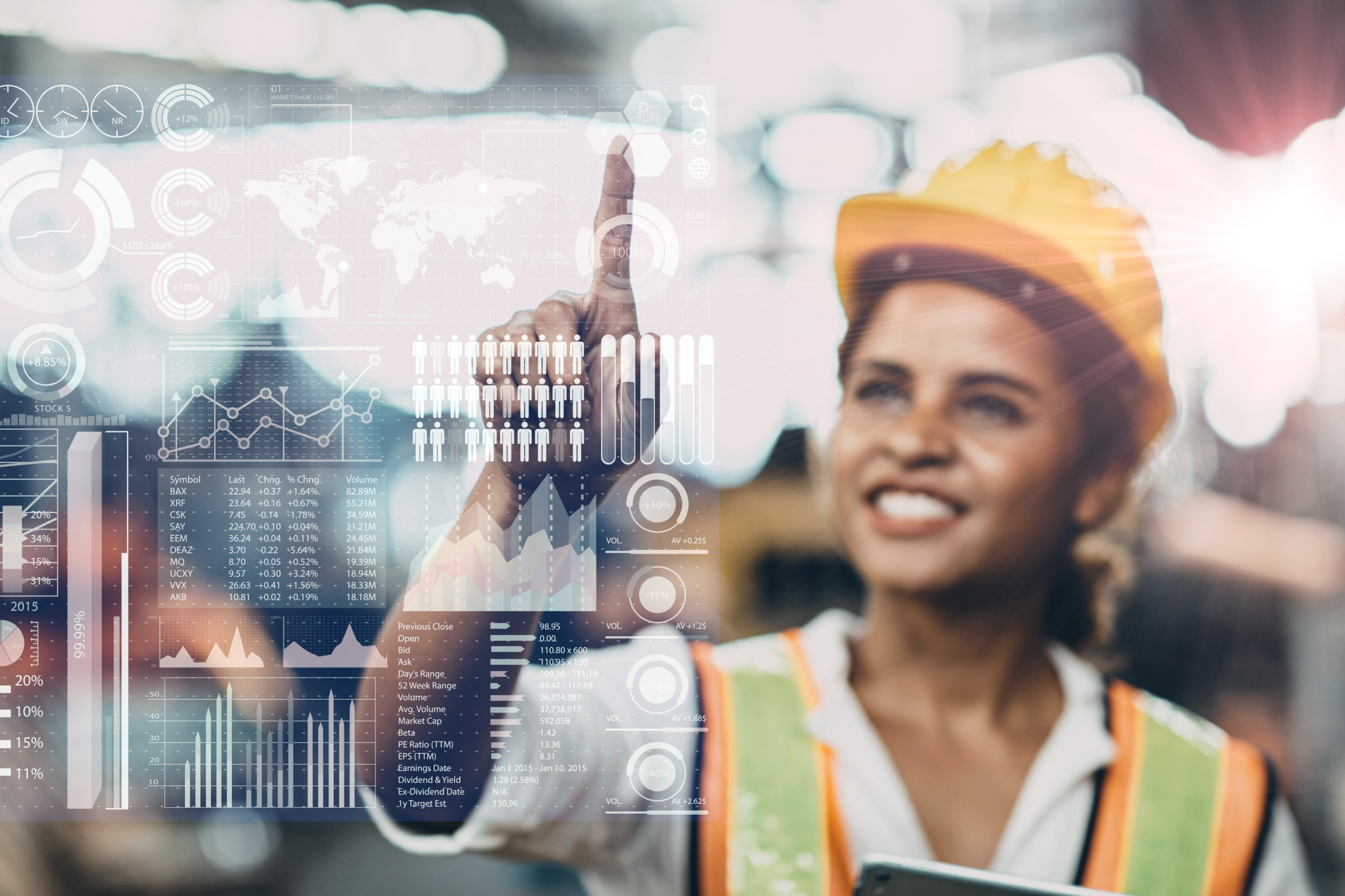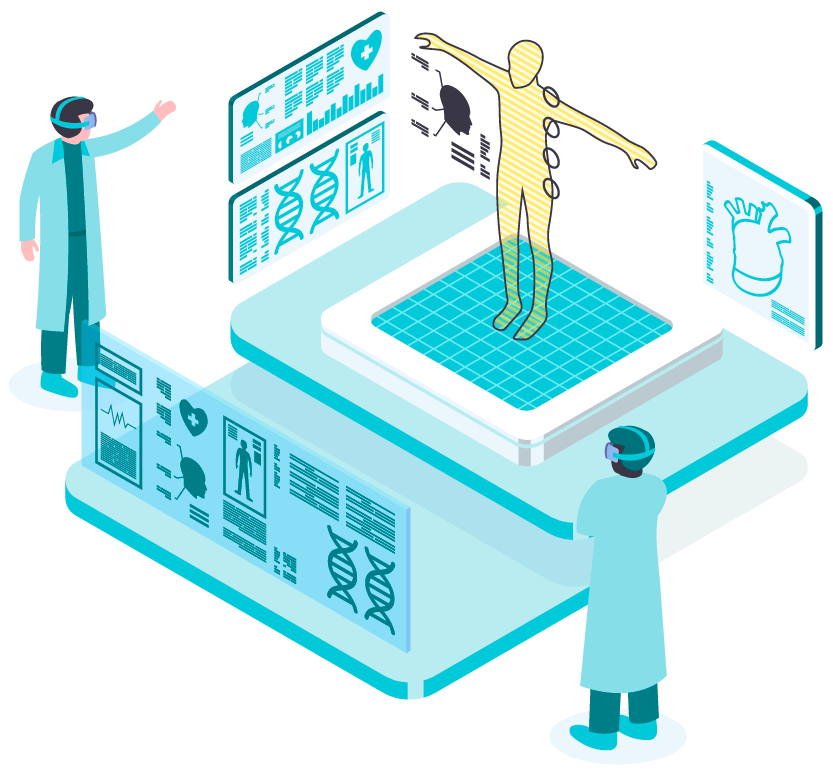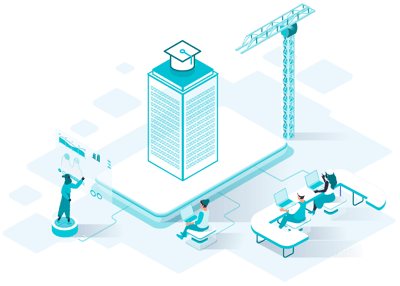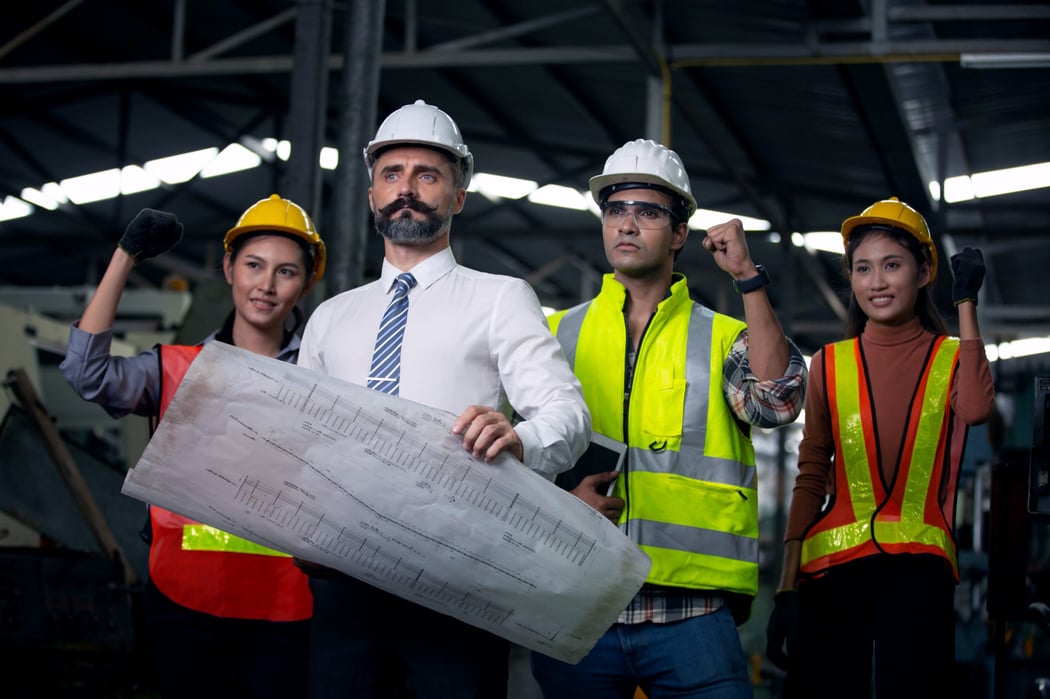
AUGMENTED REALITY TRAINING DEFINITION
What is augmented
reality training?
Augmented reality training, or AR training, enhances training sessions by incorporating interactive digital objects into real-world environments.
AR platforms accomplish this by rendering and deploying content to a device — such as a smartphone or headset — and providing trainees with an interface that controls the experience.
VIRTUAL REALITY TRAINING
What is the difference between AR and VR training?
Virtual reality training shares some technological overlap with AR training, but they are two different experiences.
VR fully immerses the trainee into a digital environment. AR, on the other hand, enhances real-world learning by simulating responses to real-world actions — such as cutting an electrical wire or adjusting a water pressure system. This approach helps trainees grasp certain principles quickly and recall the appropriate behaviors in the field.

AUGMENTED REALITY TRAINING HARDWARE
What equipment can run AR training programs?
Augmented reality training equipment is as diverse as the industries that required it. Enterprises looking to implement AR training will likely need custom solutions to adapt the platform to their unique needs. The end result might demand a specialized on-site interface or a UI that anyone can manage from a smartphone app.
Handheld devices
The most widely-known AR device is the common smartphone, but tablets can also fill this role. Compatible hardware requires a built-in camera to record the user’s surroundings while mixing digital renderings onto the display screen.
Headsets
Augmented reality headsets, glasses, and other head-mounted displays are also useful training devices. By bringing AR cameras and displays together, the software can better combine digital and real-world objects within their field of view, creating a more familiar visual perspective.
Retinal displays
Retinal displays function in a similar way to head-mounted units, but with one crucial difference — they transmit images directly on the user’s retina instead of relying on a screen. While retinal equipment can be fairly unobtrusive, they tend to work best in fixed lighting conditions.
Projection mapping tech
The most experimental version of AR hardware, this method projects images and graphics onto physical objects. Unlike other augmented reality equipment, the trainee does not control AR objects through a dedicated device. This design allows enterprises to scale their AR training for large groups of trainees.
AR TRAINING EXAMPLES
What industries use AR training techniques?
Augmented reality training is a relatively new practice with a small number of proponents, yet it applies to a surprisingly broad range of industries. Some businesses use AR as a tech-based alternative to regular onboarding processes, but many use it to practice specialized or even dangerous tasks within a safe environment. Here are a few examples of industries that use AR training methods today:

Skilled trades
Apprentices and students training in skilled trades use AR to simulate their working environments. Ontario’s Mohawk College, for example, uses Microsoft’s HoloLens to create water pressure systems that students interact with during lab sessions.
Engineering
Augmented reality is an increasingly effective tool for training construction, engineering, and manufacturing teams. According to one study, 26% of companies with AR capabilities use them for employee training. Approximately 53% of respondents also use them as design tools.
Oil and Gas
Oil and gas businesses typically use augmented reality to provide visual cues and instructions for dangerous equipment. When companies train employees with these systems, it reduces classroom session time while increasing knowledge retention and overall safety.
Retail & Hospitality
Augmented reality training plays a growing role in the retail and hospitality industries. Staff can experience AR-powered customer service interactions. Next, AR allows for product knowledge training to quickly familiarize employees with branded products. Finally, staff onboarding is significantly faster when AR training tools are available.
Healthcare & Medical
AR training has immense potential in medical education as well as day-to-day hospital operations. One excellent example is the HoloAnatomy app, which lets students examine 3D digital renderings of anatomical images in various bodily positions. This technique can supplement or replace cadaver studies without sacrificing detail.
Education
Augmented reality training doesn’t end with on-the-job training — it applies to standard classroom settings as well. AR tools like Elements 4D let students test different chemical reactions without handling substances directly. Meanwhile, Google Expeditions can create digital renderings for in-class study, including tornados, volcanos, and more.
AUGMENTED REALITY TRAINING EFFECTIVENESS
Is AR training more effective than standard methods?
Augmented reality training may be a relatively new technique, but it is proving far more time-efficient and conducive to learning than standard methods.
According to this literature review, 59% of studies show that AR training improves performance times. Meanwhile, 87% show AR contributes to increased learning, both for trained tasks and general education. All relevant studies show augmented reality training reduces errors during tasks and enhances participant immersion.

AR TRAINING DESIGN
How do you build an AR training program?
Training programs must meet unique demands for each industry — to say nothing of each business. In practical terms, the best augmented reality training solutions are customized to meet the needs of each workplace. Here are a few tips to get you started:

1
Start small
When building a custom AR training platform, you don’t need to create a massive service that scales to any organization. Start with a small pilot that can meet a specific need and build features as necessary.
2
Incorporate real-world surroundings
AR’s greatest strength is how it reimagines your physical surroundings. Consider how AR can enhance real-world training, as opposed to creating fully digital experiences.
3
Choose AR distribution method
Most AR platforms deploy content to smartphone apps, which is helpful for navigation or training based on visual cues. If you require something hands-on, that might demand specialized sensors or a standalone device.
4
Avoid internet dead zones
The last thing you want is to build AR training support and realize the designated room doesn’t have internet access. Build your training platform in a space with internet or extend your WiFi reach accordingly.
5
Choose the right software
The ideal AR software is compatible with a wide range of hardware with easy-to-manage tools for designers and app-based end users.
AUGMENTED REALITY TRAINING SOFTWARE
Meet Vera
Vera offers a personalized AR training solution that replaces costly manuals and physical materials. With Vera’s embedded AI and real-time data, you can deploy engaging tutorial sessions, update scenario content remotely, and ensure a seamless digital training experience for your employees.
Resources
How AR Can Maximize the Value of a Lean Facilities Management Staff
The COVID-19 outbreak has put a strain on the global economy, and as a result, many businesses are...
3 Ways Retailers Can Use Augmented Reality to Increase Sales
In a world where everything is online and connected, many retailers are using modern technology...
Leading Retail Brands Profiting From Experiential AR
As our real and digital worlds become interconnected, augmented reality (AR) proves itself to be...

